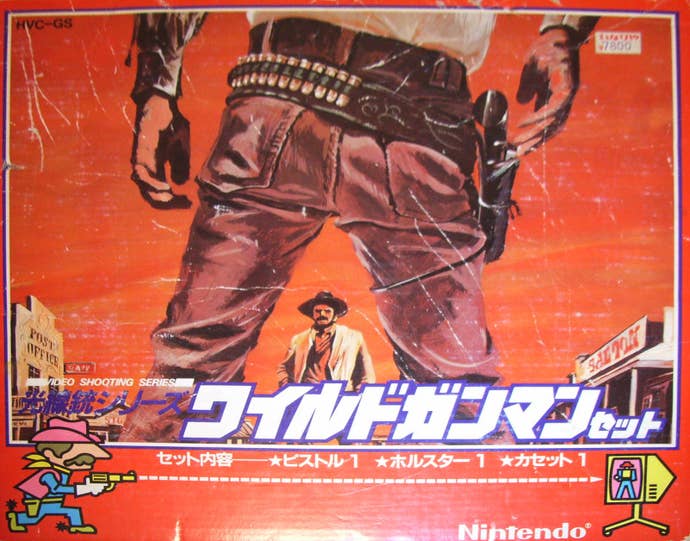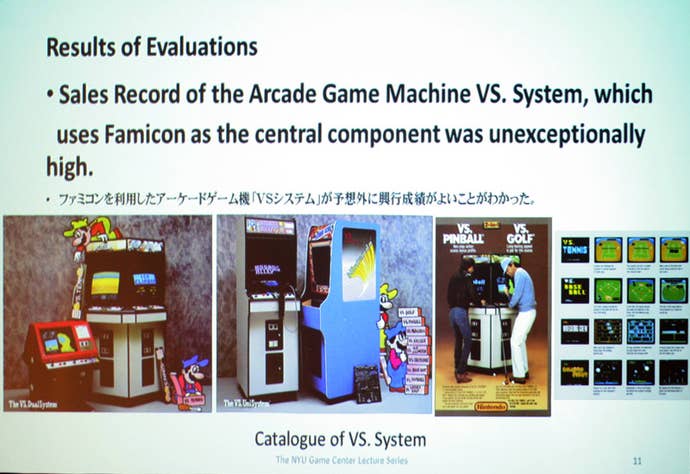How Marty McFly Saved Video Games
Wild Gunman may be a relic today, but it had a vital role to play in the past, present, and future.
This article first appeared on USgamer, a partner publication of VG247. Some content, such as this article, has been migrated to VG247 for posterity after USgamer's closure - but it has not been edited or further vetted by the VG247 team.
If you've had even a glancing interaction with the Internet over the past week or so, you might have heard someone mention the fact that today—October 21, 2015—is the day to which Marty McFly travelled when he and Doc Brown journeyed 30 years into the future in the movie Back to the Future II. By "might have," of course, I mean "absolutely have," because it's turned into a major, nerdy obsession for the majorly obsessive nerds of the Internet.
And hey, I'm not immune to this whole Back to the Future II obsession, either. I realize it's not a great movie, but I've always had a soft spot for it, as it's the first movie I ever took a girl to see on a group date. Today marks the most interesting incident of reality catching up with future fiction since we reached Crystalis' purported "End Day" back on October 1, 1997 and didn't all die in a nuclear fire. However, rather than celebrate the occasion by regurgitating a list of things the movie correctly predicted about the future or got totally wrong (something the film's original cast has already tackled quite ably!), I'd prefer instead to take a closer look at a topic more germane to USgamer: Marty McFly's encounter with Nintendo's Wild Gunman.
If by some bizarre chance you're geeky enough to read a site like USgamer yet not quite geeky enough to have seen the Back to the Future trilogy, here's the scene in brief: Marty, a normal teenager living in a small-ish city in Northern California, has been taken forward in time 30 years from his own era, 1985, in order to prevent his future offspring from ruining their lives. While in 2015, he discovers the town's retro-’50s cafe is now a retro-’80s cafe, featuring Max Headroom-style caricatures of ’80s world leaders and other such indulgences.
In the corner of the cafe, Marty spots a Wild Gunman arcade cabinet. Unable to contain his excitement, he grabs the pistol for Nintendo's classic Old West-themed light gun shooter and plinks the bad guys, flawlessly, in rapid succession. Victory in hand, he turns around smugly to bask in the adulation of some young onlookers, only to have his ego deflated when the kids dismiss Wild Gunman as a "baby game" for using a physical controller. Poor Marty was tragically unprepared for Kinect.
The filmmakers' choice of Wild Gunman might seem somewhat random—it wasn't real, for one thing. Rather, the cabinet was custom-built for the movie as a plot device. The Wild Gunman machine's hardwired Zapper served as a very literal Chekhov's Gun, establishing Marty's acumen with a revolver (or revolver-like toy) so that his remarkable accomplishments as an Old West gunman in the third film wouldn't come entirely out of left field.
To the producers' credit, Wild Gunman was actually period-appropriate for Marty to gravitate toward. The Back to the Future sequels didn't hit theaters until 1989-90, and given Hollywood's tendency to play fast and loose with video game facts, they were just as likely to throw in some kind of weird anachronism. But they didn't, and it creates an interesting tangential, historical footnote for Marty.
Marty's temporal origin point was Oct. 25, 1985. For those paying attention, that's exactly a week after the Nintendo Entertainment System made its debut in the U.S. market. Wild Gunman, of course, arrived on Oct. 18 as well, a launch title for the console designed to make use of the packed-in Zapper light gun peripheral. But there's no way that's how Marty knew about Wild Gunman; the NES launched exclusively in New York City, with strictly local advertising to promote it. As a high school kid belonging to a lower-middle class family struggling to make ends meet in small-town California, it seems awfully unlikely that Marty would have had access to the NES—or even any knowledge of a console available at a few stores on the other side of the country, for that matter. Not in those early, pre-Internet days. And he definitely didn't know about Wild Gunman from its Japanese release about a year prior.

Last week, NES hardware designer Masayuki Uemura gave a presentation at NYU's Game Center discussing the origins of the system and the decision to bring it to the U.S. market. One of the interesting tidbits he mentioned was the that the success of Nintendo's arcade-based Vs. System played a significant role in Nintendo's decision to localize the console. The original Japanese version of the NES, the Famicom (Family Computer), hadn't fared too well in its first year or two on the market, so Nintendo began looking to America as a possible candidate for an international release of the system.
According to Uemura, the stories recounted in books like David Sheff's Game Over were true: The collapse of Atari's market in 1982-83 made retailers wary of committing to new video game ventures. Nintendo's early inquiries into U.S. distribution all met with the same solemn advice: Don't bother. And yet the dire statements of retail buyers didn't line up with Nintendo's own market research, which showed that Americans still loved playing video games. Their source? None other than their own first-hand experience with the Vs. arcade series, which literally consisted of Famicom hardware custom modded to work like a coin-op system. If games like Baseball, Duck Hunt, and of course Wild Gunman were hits in arcades, it stood to reason they'd translate well to the home experience as well.

Emboldened by their success, Nintendo forged ahead and released the Famicom in America under the NES name; the rest, of course, is history. The NES resuscitated the U.S. console market, preventing the country's game fans from shifting entirely to personal computers the way they had in the UK.
That means Marty McFly played a crucial role in video game history. Given the level of skill he displays with the ’80s cafe's Wild Gunman cabinet, it stands to reason he had played the game extensively during its pre-NES arcade run. He brandishes the light gun with practiced ease, playing a perfect, effortless game. His is the kind of talent that comes only with tremendous practice, which means obsessively dropping quarter after quarter into the machine. Kids like Marty helped make Nintendo's test-case coin-ops a hit, and that means he was directly responsible—albeit in a small way—for helping to bring about the revitalization of American console games.
In other words, saving his family and time itself should have been no big deal for Marty McFly; he'd already helped save video games. Of course, Back to the Future and Marty McFly are entirely fictional, which seems appropriate: Again, so was Vs. Wild Gunman. In reality, Nintendo never actually released the game in arcades, either as a Vs. cabinet or in a PlayChoice-10 configuration. So perhaps the most important takeaway here is that the films' timeline was already damaged before Doc and Marty started messing around with it, stranding them in a parallel reality where Wild Gunman made the arcade cut after all. How else could Marty have known the game so well?
Note: My full interview with Masayuki Uemura from his NYU appearance will run next Monday—please look forward to it!





_ddwYK80.png?width=291&height=164&fit=crop&quality=80&format=jpg&auto=webp)



